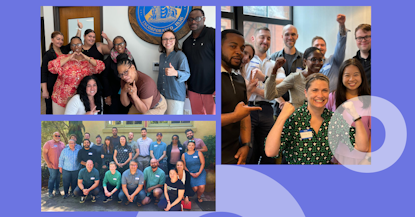How to reach your goals: 4 takeaways from our work with U.S. cities

Newark, Boston and Portland (OR) are three very different cities in the United States, but they share one common goal: they want to align their spending with the goal of greater economic inclusion, especially for local and historically underserved businesses and neighborhoods.
We want to share four takeaways from a recent trip during which we met and worked with our partners as part of our support under our Lift impact accelerator program and other engagements. What we’ve learned, we think, can apply to many cities around the world with a similar goal.
Public procurement is an expression of your city’s values: Through public procurement, cities not only spend taxpayers money, they also deliver essential services and infrastructure to their residents and interact with businesses on a daily basis. Procurement is how residents, governments and even government officials themselves experience their city government as effective, welcoming, and inclusive – or the opposite of these values. It was great to be in cities where the city leaders are using procurement as a strategic lever to bring these values to life.
From compliance to service: Procurement teams are often perceived to be the compliance department. Most of the time, buyers don’t love to get that call from the procurement analysts because it usually means they got something wrong. But what if the procurement analyst were calling to offer their help? What if they can help you buy faster and better? We have seen that it takes this conscious shift from reactive compliance to proactive support offers to support better buying.
Meet, meet, meet: “We don’t have a meeting culture.” “We don’t have the time to meet.” We hear this often. But when we as OCP come to town, city teams tend to meet with other departments and external groups that they don’t usually talk too much. Once they do, they often realize that aligning on priorities and getting feedback is not only super helpful, but also that there is more buy-in for their reforms than they think. So go ahead and schedule that meeting.
Procurement planning is key: Values, service and meetings lead you to procurement planning. While we confess this may sound boring, it is so powerful, particularly when combined with better and open data about the procurement process and execution. Knowing in advance who is trying to buy what, from whom, by when, allows for more proactive and joint contracting with more and potentially better vendors. Procurement planning can be as simple as a quarterly meeting (yes, a meeting) to using spreadsheets, or platforms that allow both departments and vendors to see what’s in the pipeline.